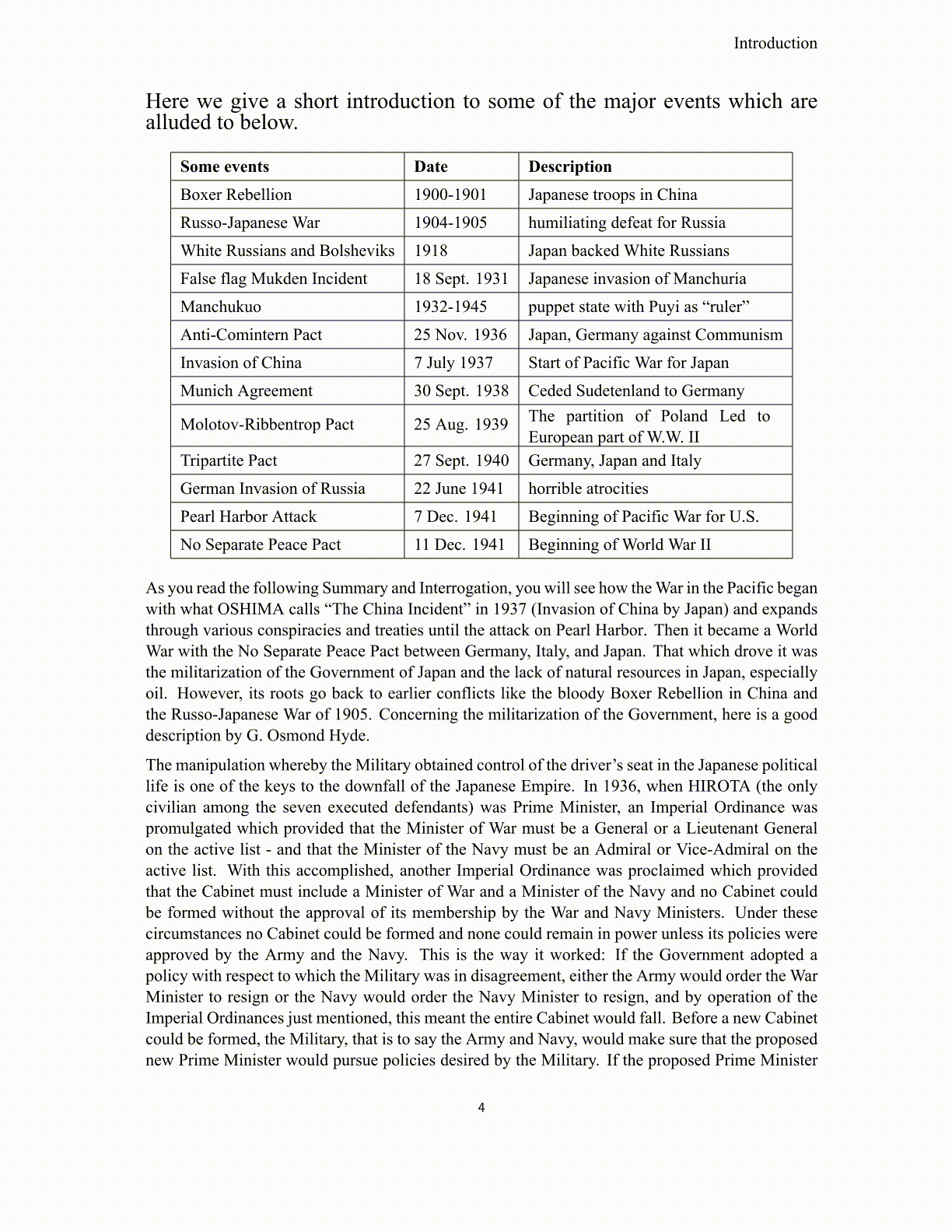
Introduction Here we give a short introduction to some of the major events which are alluded to below. Some events Date Description Boxer Rebellion 1900-1901 Japanese troops in China Russo-Japanese War 1904-1905 humiliating defeat for Russia White Russians and Bolsheviks 1918 Japan backed White Russians False flag Mukden Incident 18 Sept. 1931 Japanese invasion of Manchuria Manchukuo 1932-1945 puppet state with Puyi as “ruler” Anti-Comintern Pact 25 Nov. 1936 Japan, Germany against Communism Invasion of China 7 July 1937 Start of Pacific War for Japan Munich Agreement 30 Sept. 1938 Ceded Sudetenland to Germany Molotov-Ribbentrop Pact 25 Aug. 1939 The partition of Poland Led to European part of W.W. II Tripartite Pact 27 Sept. 1940 Germany, Japan and Italy German Invasion of Russia 22 June 1941 horrible atrocities Pearl Harbor Attack 7 Dec. 1941 Beginning of Pacific War for U.S. No Separate Peace Pact 11 Dec. 1941 Beginning of World War II As you read the following Summary and Interrogation, you will see how the War in the Pacific began with what OSHIMA calls “The China Incident” in 1937 (Invasion of China by Japan) and expands through various conspiracies and treaties until the attack on Pearl Harbor. Then it became a World War with the No Separate Peace Pact between Germany, Italy, and Japan. That which drove it was the militarization of the Government of Japan and the lack of natural resources in Japan, especially oil. However, its roots go back to earlier conflicts like the bloody Boxer Rebellion in China and the Russo-Japanese War of 1905. Concerning the militarization of the Government, here is a good description by G. Osmond Hyde. The manipulation whereby the Military obtained control of the driver’s seat in the Japanese political life is one of the keys to the downfall of the Japanese Empire. In 1936, when HIROTA (the only civilian among the seven executed defendants) was Prime Minister, an Imperial Ordinance was promulgated which provided that the Minister of War must be a General or a Lieutenant General on the active list - and that the Minister of the Navy must be an Admiral or Vice-Admiral on the active list. With this accomplished, another Imperial Ordinance was proclaimed which provided that the Cabinet must include a Minister of War and a Minister of the Navy and no Cabinet could be formed without the approval of its membership by the War and Navy Ministers. Under these circumstances no Cabinet could be formed and none could remain in power unless its policies were approved by the Army and the Navy. This is the way it worked: If the Government adopted a policy with respect to which the Military was in disagreement, either the Army would order the War Minister to resign or the Navy would order the Navy Minister to resign, and by operation of the Imperial Ordinances just mentioned, this meant the entire Cabinet would fall. Before a new Cabinet could be formed, the Military, that is to say the Army and Navy, would make sure that the proposed new Prime Minister would pursue policies desired by the Military. If the proposed Prime Minister 4